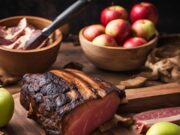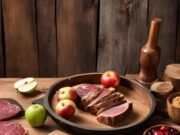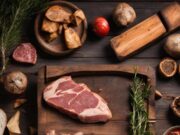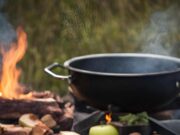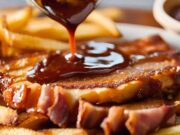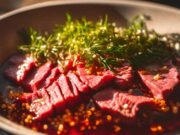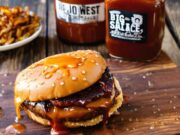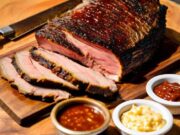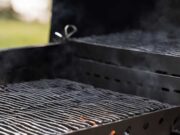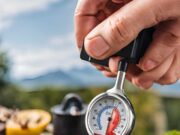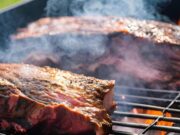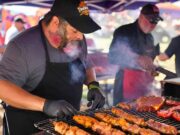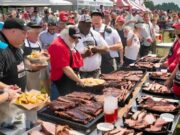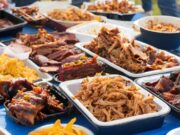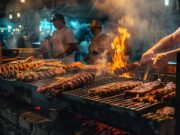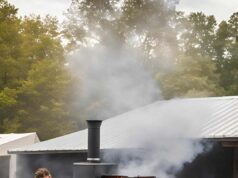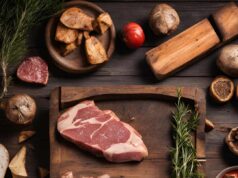Searing meat on a BBQ is an art that elevates ordinary cuts into exceptional meals, enhancing both flavor and texture. The ideal crust not only excites the palate but also locks in juices, ensuring a truly mouthwatering experience.
This guide delves into the science behind searing, identifies the best cuts of meat to select, and outlines essential techniques for preparing both your meat and grill.
By implementing these tips, you will be well-equipped to master the grill and impress your guests.
Key Takeaways:
- Achieving a good sear on meat is crucial for flavor and texture.
- Properly drying and seasoning the meat, along with high heat and correct flipping techniques, are key to achieving the perfect crust.
- Resting the meat after searing is essential for a juicy result.
How to Sear Meat on a BBQ: Tips for Achieving the Perfect Crust
Searing meat on a BBQ is an essential cooking technique that enhances flavor and creates a delectable crust, making it a weekend favorite for grill enthusiasts. Achieving the perfect sear requires careful attention to heat management, selecting the right cuts, and understanding the balance between direct and indirect cooking methods.
This process not only locks in the juices but also creates attractive grill marks that signify a well-cooked steak. Whether you are grilling ribeyes, filets, or shell steaks, this guide will equip you with expert tips to help you master the art of searing meat on your BBQ grill.
What is Searing and Why is it Important?
Searing is a cooking technique that involves exposing meat to high heat, which creates a desirable crust that enhances both flavor and texture. This step is pivotal in preparing any BBQ dish. The process not only caramelizes the surface of the meat but also locks in moisture, ensuring juicy and flavorful results—especially important when working with premium cuts like ribeyes and filets.
At the core of this phenomenon is the Maillard reaction, a complex series of chemical reactions that occur when proteins and sugars are subjected to high temperatures. This reaction produces the rich, savory flavors typically associated with perfectly seared meat while also contributing to the appealing brown color and crunchy texture.
To achieve optimal results, careful control of heat levels is necessary. If the heat is too low, crust formation may be insufficient; conversely, excessive heat can lead to burning rather than a pleasing sear. Mastering this balance is essential for anyone looking to elevate their culinary skills, particularly in BBQ settings where flavor is of utmost importance.
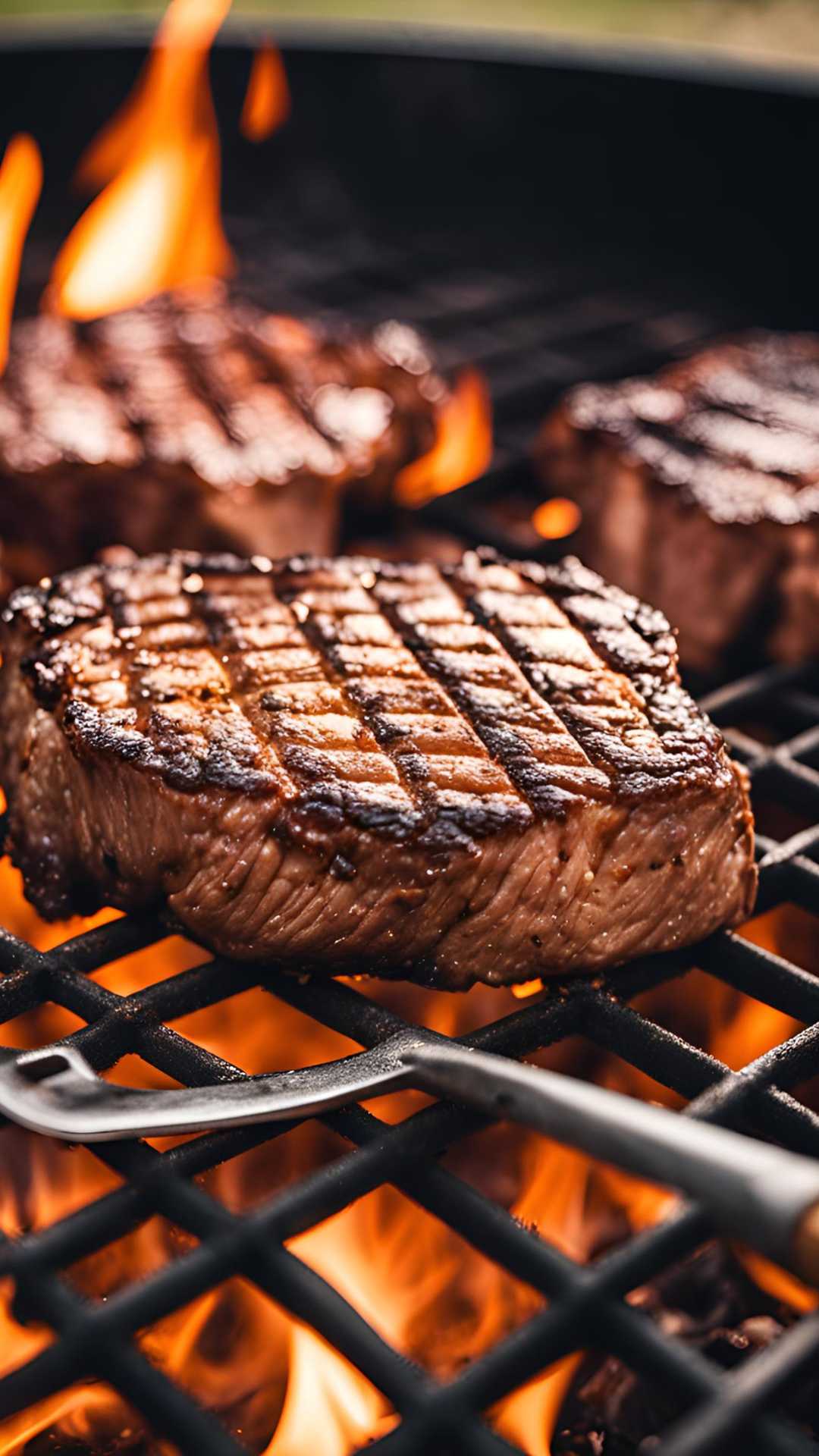
Choosing the Right Cut of Meat
Selecting the right cut of meat is essential for achieving a perfect sear on the BBQ, with options such as ribeyes, filets, and shell steaks standing out due to their marbling and flavor profiles. Each cut possesses unique characteristics that respond differently to the high heat of grilling, ultimately influencing the texture and taste of the final product.
For example, the ribeye is particularly well-marbled, enhancing its flavor and ensuring a juicy result even under intense heat. This cut can develop a beautifully charred crust while maintaining a succulent interior.
In contrast, the lean filet mignon, while tender, requires careful attention to avoid overcooking; its lower fat content can lead to dryness if left on the grill for too long.
Shell steaks, often derived from the same primal cut as other favorites, typically boast a rich beefy flavor complemented by a substantial amount of fat, making them an excellent choice for those who appreciate a hearty meal. Understanding these nuances can enhance your grilling experience, enabling you to bring out the best in each cut.
Preparing the Meat for Searing
Proper preparation of meat before searing is essential for achieving the optimal crust and flavor. This involves key steps such as patting the meat dry and seasoning it with Kosher salt, pepper, and olive oil.
Controlling moisture and applying the right seasoning technique not only enhances the crust but also ensures that the flavors penetrate the meat, ultimately resulting in a more enjoyable BBQ experience.
Preparing the BBQ for Searing
Preparing your BBQ for searing requires setting it up to reach high heat. It’s important to understand the difference between direct and indirect heat methods to ensure your grill is preheated for optimal cooking.
Achieving the right temperature, whether you are using a gas grill or charcoal, is essential for creating the perfect sear. This process locks in flavor and moisture while developing a robust crust on your food.
1. Drying and Seasoning the Meat
To achieve an exceptional sear, it is crucial to first dry and season the meat properly. Utilize Kosher salt, pepper, and a drizzle of olive oil to enhance both the crust and flavor.
Moisture on the surface of the meat creates steam during cooking, which interferes with the browning process and makes it challenging to develop that desired golden-brown crust. Therefore, it is essential to pat the meat dry with paper towels before seasoning. This step not only helps achieve a superior sear but also allows the seasoning to adhere better to the proteins.
A simple yet effective method involves using an even ratio of salt to pepper, which enhances the meat’s natural flavors while ensuring depth. Allowing the seasoned meat to rest for at least 30 minutes enables the salts to penetrate, creating a flavorful brine that amplifies taste and texture for optimal results.
Techniques for Searing Meat
Mastering the techniques for searing meat involves a variety of methods that guarantee optimal grill marks, flavor, and texture. This includes effective heat management and precise timing throughout the grilling process.
Whether you are using a gas grill such as the S440 Genesis or a traditional charcoal grill, understanding these techniques will enhance your BBQ experience and impress your guests.
1. Preheating the Grill and Cooking Times
Preheating your grill is crucial for achieving the high temperatures necessary for searing. Optimal cooking times will vary depending on the thickness and type of meat, such as ribeyes or filets, to achieve that perfect crust.
To ensure your grill is properly preheated, allow it to warm up for at least 15 to 30 minutes before placing any meat on it. The duration may vary based on whether you are using a gas or charcoal grill. Ideal temperature ranges typically hover around 450°F to 500°F for most cuts; however, thicker meats may benefit from slightly lower heat to ensure thorough cooking.
For example, a ribeye steak may take approximately 8 to 10 minutes per side at this temperature, while thinner cuts like flank steak may only require 4 to 6 minutes. Utilizing a reliable meat thermometer can significantly enhance your grilling experience. It allows you to determine doneness accurately, ensuring your efforts do not lead to overcooked or undercooked meals. Monitoring temperatures will instill confidence in your cooking, with target internal temperatures of 135°F for medium-rare and 160°F for medium.
2. The Importance of Flipping
Flipping meat at the appropriate moments during the searing process is essential for achieving an even sear and perfect grill marks, which enhance both the appearance and taste of the dish.
To master this technique, you must pay close attention to the cooking times and visual cues that indicate the optimal moment to turn the meat. Generally, allowing the meat to rest undisturbed for at least three to five minutes on each side helps form a deep crust, contributing to both flavor and texture.
Observing color changes, particularly when the surface develops a rich brown hue and juices begin to surface, signals that it is time to flip the meat. This method not only prevents sticking but also ensures even cooking, resulting in a juicy and delectable meal.
Post-Searing: Resting the Meat
Resting the meat after searing is a critical step in the cooking process that allows the juices to redistribute, ensuring a juicy and flavorful outcome in your BBQ dishes.
This practice applies to various cuts, and the recommended resting times can differ. For larger cuts like brisket or pork shoulder, resting for 20 to 30 minutes is beneficial, while steaks typically require only 5 to 10 minutes to achieve optimal texture and taste.
This essential phase significantly enhances the final product, as it allows the fibers to relax and absorb the flavors fully. During this crucial moment, the meat transforms, becoming not only more succulent but also more enjoyable to eat, thereby elevating the overall dining experience.
Frequently Asked Questions
What is the best way to sear meat on a BBQ?
The best way to sear meat on a BBQ is to preheat your grill to high heat, and then place your meat directly on the grill. Make sure to only flip the meat once, and let it cook for a few minutes on each side to achieve a perfect crust.
What type of meat is best for searing on a BBQ?
Thicker cuts of meat, such as steaks or pork chops, are best for searing on a BBQ. Thinner cuts may overcook or dry out before achieving a proper crust.
Should I use oil when searing meat on a BBQ?
It is recommended to lightly coat your meat with oil before searing on a BBQ. This will help prevent sticking and promote an even crust.
How do I know when my meat is ready to be flipped while searing on a BBQ?
A good rule of thumb is to wait until the meat releases easily from the grill before flipping. You can also use a meat thermometer to check the internal temperature – for a medium rare steak, it should be around 130-135 degrees Fahrenheit.
Can I sear meat on a BBQ without a grill?
Yes, you can use a cast iron skillet or griddle on your BBQ to achieve a similar sear. Simply heat the skillet on the BBQ until it is very hot, and then add your meat to sear.
How can I prevent my meat from drying out while searing on a BBQ?
To prevent your meat from drying out, make sure to only sear for a few minutes on each side. You can also try using a marinade or rub to add moisture and flavor to the meat.



